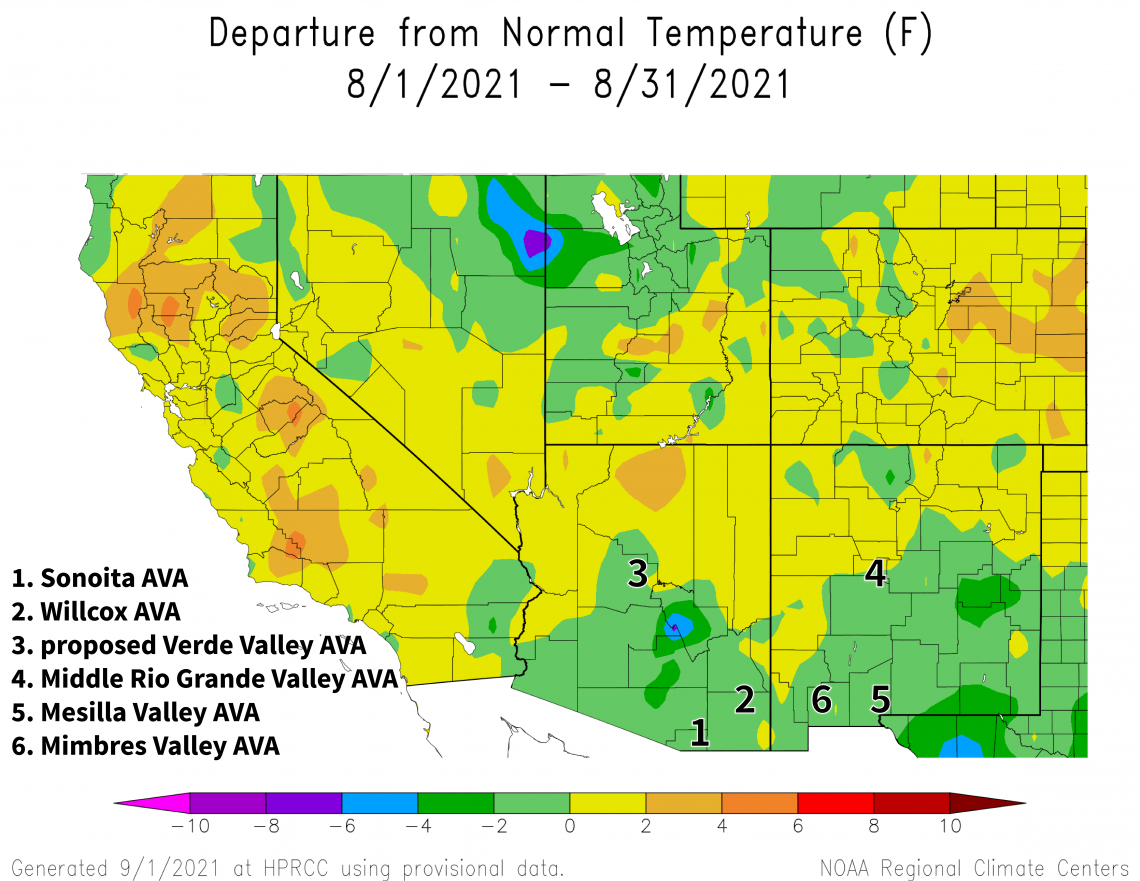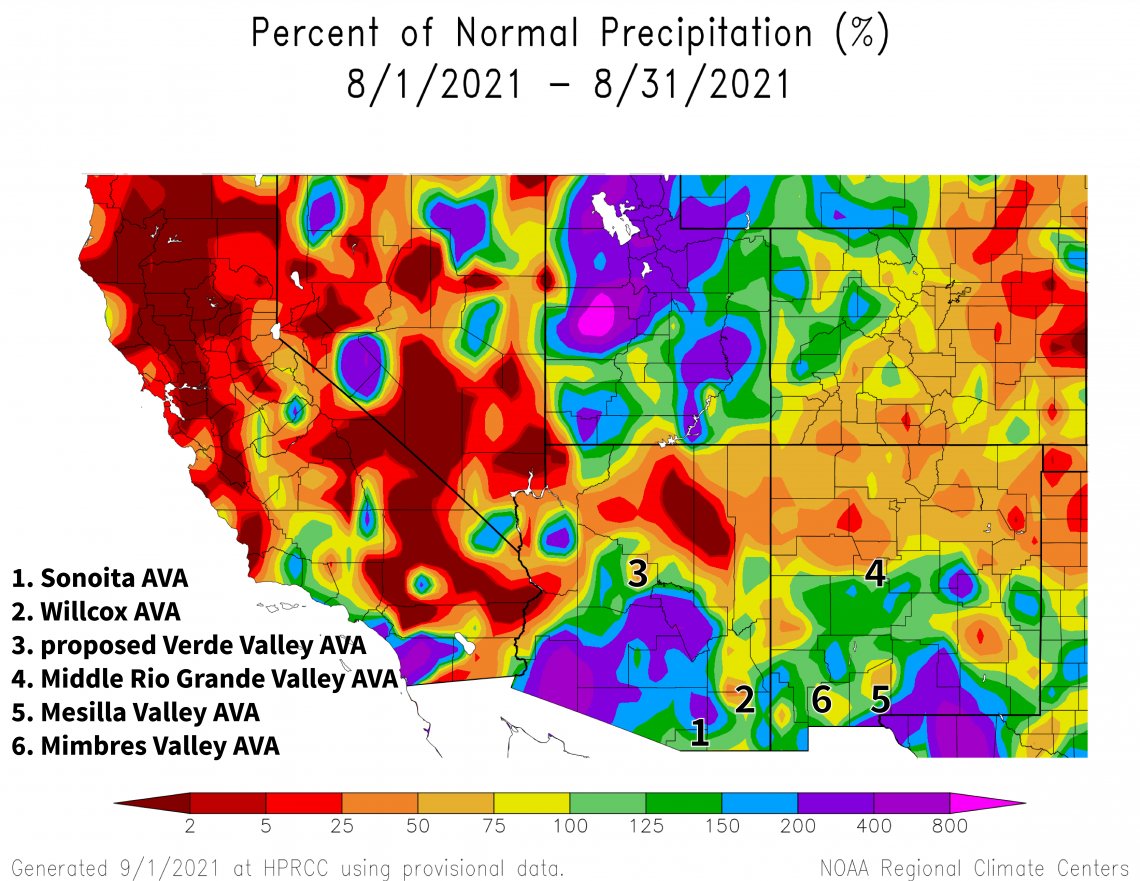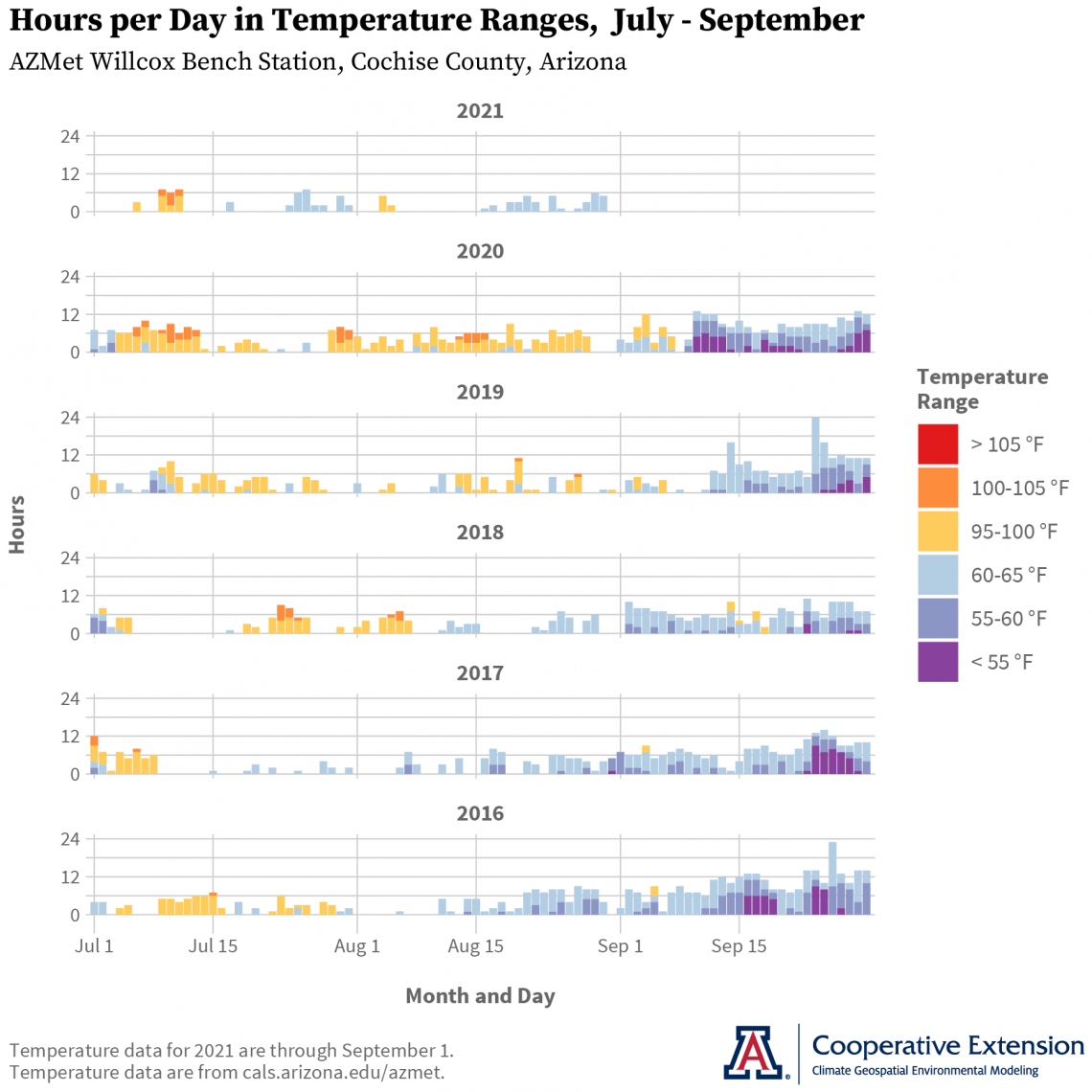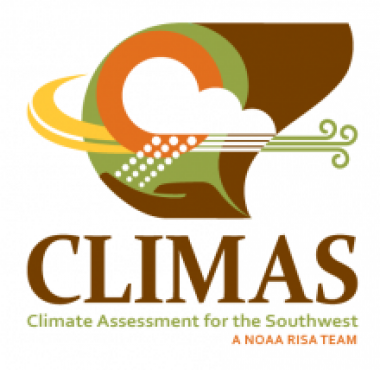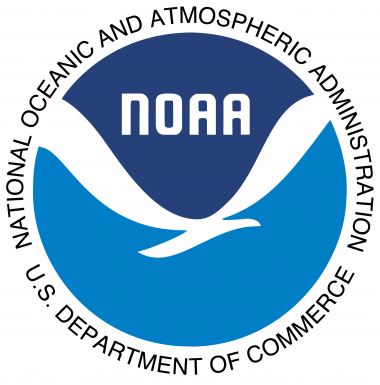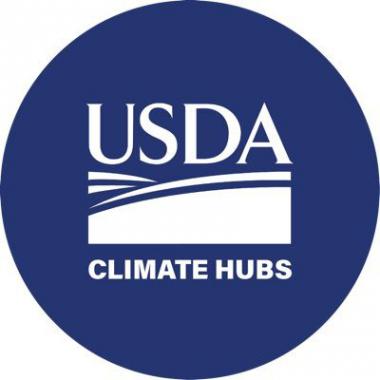Climate Viticulture Newsletter - 2021 September
< Back to Climate Viticulture Newsletter
Hello, everyone!
This is the September 2021 issue of the Climate Viticulture Newsletter – a quick look at some timely climate topics relevant to winegrape growing in Arizona and New Mexico.
A Recap of August Temperature and Precipitation
Temperatures last month were within 2 °F of the 1991-2020 normal for almost the entire region (light green and yellow areas on map). As a comparison, monthly temperatures in August last year were near or up to 2 °F warmer than the 1981-2010 normal for much of northern Arizona and northwestern New Mexico, and 2 to 6 °F warmer than normal for most of the rest of the region.
Not since June and the pre-veraison part of the growing season have we had to deal with much if any record or near-record heat. This is quite a contrast from 2020, and may have helped reduce or avoid impacts like berry shrivel and anthocyanin degradation during the ripening period in 2021, at least for warm-climate growing areas in the region. We’ll look more in detail at this aspect of temperature below.
Of course, the recent relative lack of heat has a lot to do with the humidity, cloudiness, and rainfall brought about in large part by the North American monsoon. Precipitation totals last month were above the 1991-2020 normal for the second consecutive month for much of southern Arizona and New Mexico (green, blue, and purple areas on map). For the northern tier of the region, however, amounts struggled to get above 50% of normal (orange and red areas on map). In August 2020, monthly precipitation was less than 50% of the 1981-2010 normal for almost all of the region.
What one might gain in the vineyard from a lack of excessive heat and an increase in moisture one might lose to increased pest and disease pressures. The Australian Wine Research Institute has some resources on flooding and wet vintages that might help address the latter.
View more NOAA ACIS climate maps
View more-detailed regional maps and station summaries of monsoon rainfall
The Outlook for September Temperature and Precipitation
There is a slight increase in chances for temperatures above the 1991-2020 normal for extreme northwestern Arizona (light orange area on map). Otherwise, it’s equal chances for below-, near-, or above-normal temperatures for the region (white area on map). For reference, monthly temperatures in September last year were 2 to 4 °F warmer than the 1981-2010 normal for the western two-thirds of Arizona and within 2 °F of normal for the rest of the region.
2021-sep-temp-outlook-noaa-cpc.jpg
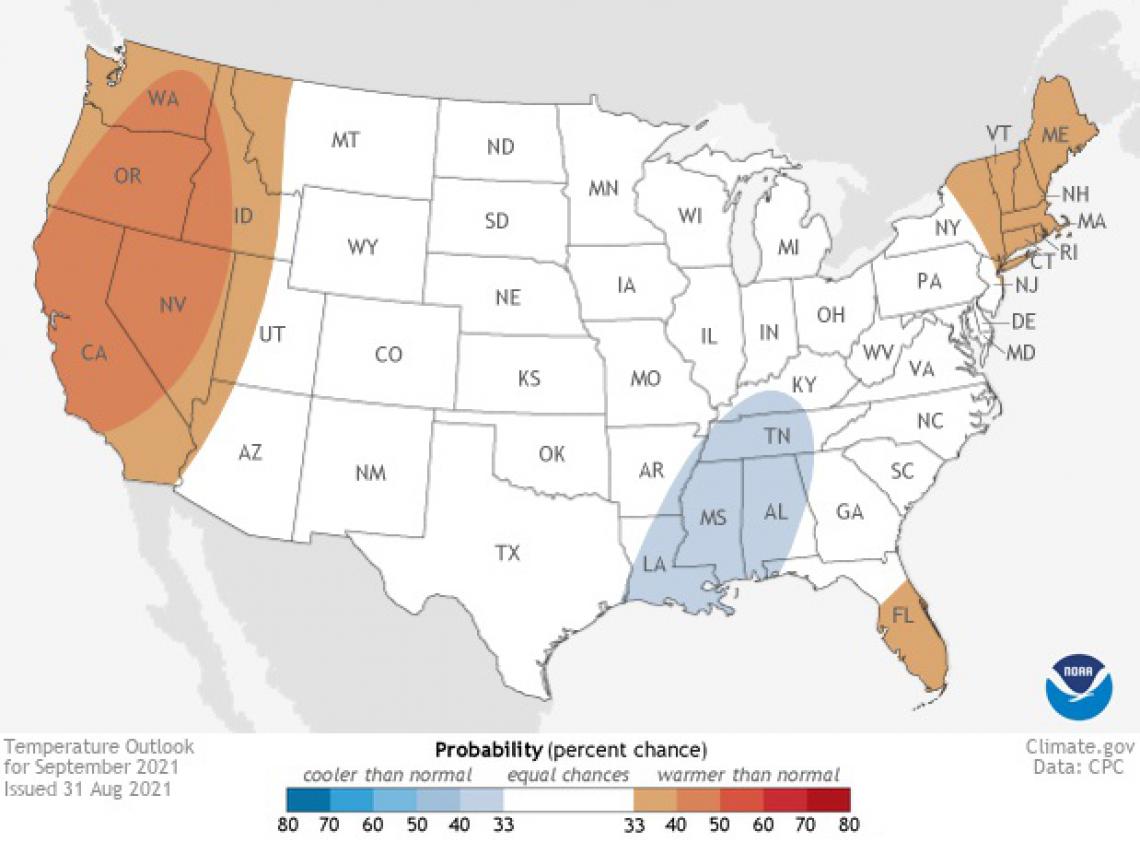
There is a slight increase in chances for monthly precipitation totals to be above the 1991-2020 normal for the eastern half of Arizona and the western two-thirds of New Mexico (light aqua and aqua areas on map). Expectations point to this potential rainfall concentrating more during the first half of the month. Equal chances for below-, near-, or above-normal precipitation exist for the rest of the region (white areas on map). Precipitation during September 2020 was below 50% of the 1981-2010 normal for almost all of Arizona and much of New Mexico.
With harvest wrapping up for some in warm-climate growing areas in the region while in full-swing for others in cool-climate ones, timing continues to be critical. A relatively late budbreak this spring and veraison this summer have set up a relatively late ripening period. How ripening lines up with the final few bursts and the last break in monsoon activity this summer, and the temperature and precipitation conditions therein, may make an impression on fruit quality for this vintage. Having early and late varieties, which can be a function of both scion and rootstock, in the vineyard can help hedge any negative effects of when harvest isn’t optimally lined up with the weather.
Read more about the September 2021 temperature and precipitation outlook
To stay informed of long-range temperature and precipitation possibilities beyond the coverage of a standard weather forecast, check in, too, with the six-to-ten-day outlook and eight-to-fourteen-day outlook issued daily by NOAA’s Climate Prediction Center.
2021-sep-prcp-outlook-noaa-cpc.jpg
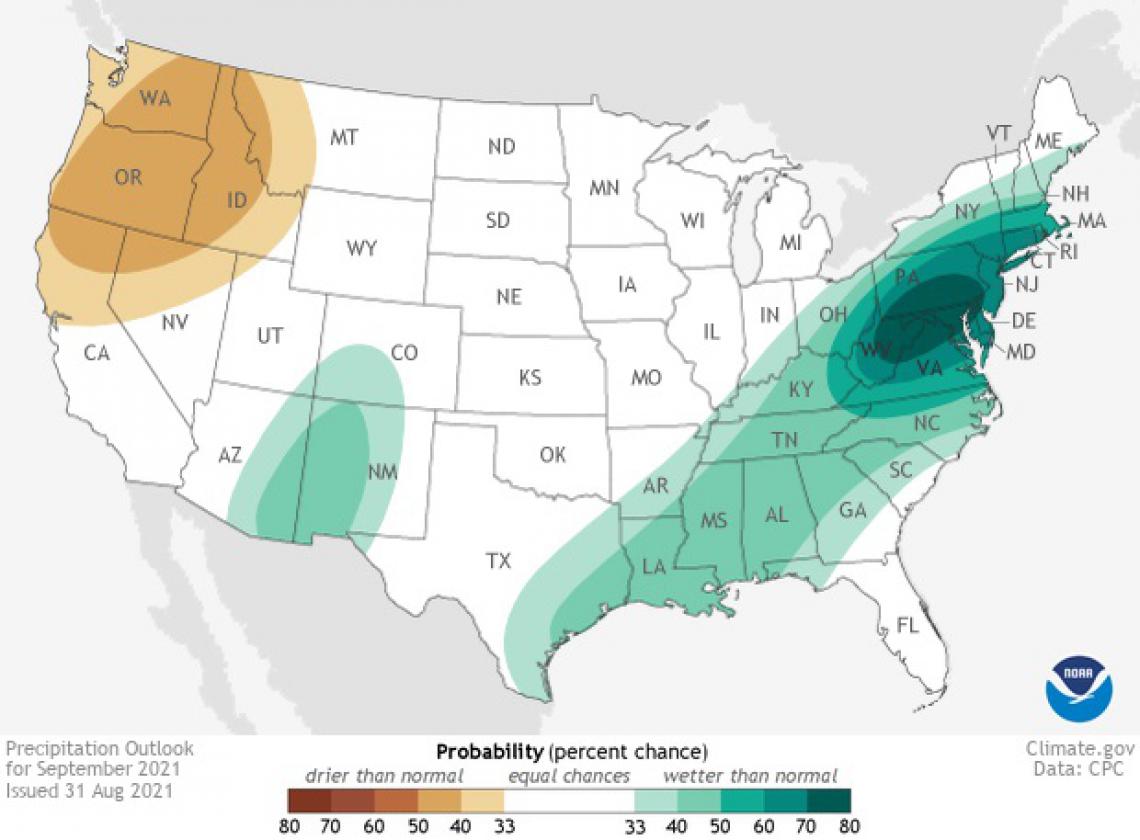
Temperature Ranges and the Ripening Period
The amount of time spent below 65 °F and above 95 °F during monsoon bursts and breaks so far in 2021 continues to be most similar to that in 2017 when it comes to recent growing seasons, at least at the AZMet Willcox Bench station in the south-central Willcox AVA. Hourly temperatures above 95 °F have occurred on only a handful of days this year, with such spells in early July and early August (yellow and orange bars in top graph). The latter parts of both of those months are when strings of temperatures below 65 °F were measured (light blue bars in top graph). In most cases, exposure to either condition was for less than six hours.
Perhaps the most notable comparison between these data from different growing seasons is the far fewer hours above 95 °F in 2021 than in 2020 (yellow and orange bars in top two graphs). As excessively hot daytime temperatures can affect fruit quality and composition during ripening, a related comparison from the vineyard might be between values of variables like Brix, titratable acidity, and pH from these two years. If a recent study of Tempranillo and Graciano in Rioja, Spain is any indication, we might expect to see more notable changes with less heat-tolerant varieties than with more tolerant ones.
Recent rainfall continued to put a dent in regional drought conditions and has led to a normal potential for significant wildland fires in September for the entire region.
Another potential in September is for a ‘double-dip’ La Niña event to take shape, which would lead to La Niña conditions during our cool-season months for a second consecutive year. The most recent forecast for ENSO, or El Niño Southern Oscillation – parts of the atmosphere and ocean across the tropical Pacific Ocean that cause El Niño and La Niña events – has a greater than 50% chance that a La Niña event develops this fall and continues through the winter. As we know, La Niña events generally mean below-average precipitation for the Southwest during the cooler months of the year. But before we get beyond the last bit of this growing season, a La Niña event this fall would favor below- or near-normal hurricane activity to the west of Mexico and Central America, which may reduce our precipitation during the next couple of months.
Have you been wondering what the contribution of Arizona’s wine industry is to the state economy? Well, you’re in luck, as hot off the press is a study on the economic activity associated with state winegrape growing, winemaking, wine sales, and investments in vineyard and winery establishments. Produced by Ashley Bickel, Dari Duval, and George Frisvold from the Department of Agricultural and Resource Economics at the University of Arizona, the study also accounts for economic activity that is supported in other industries through linkages and presents information about the size, structure, and vertical integration of Arizona’s wine industry.
Undergraduate students in the College of Agriculture and Life Sciences at the University of Arizona are looking for internships with businesses and companies in the viticulture and winery industries during 2021. Please contact Danielle Buhrow, Senior Academic Advisor and Graduate Program Coordinator in the Department of Agricultural and Resource Economics, for more information.
A recent donation of 40 acres near Willcox plus recent funding from the USDA-AZDA Specialty Crop Block Grant program are some of the first steps of a newly formed public-private collaboration towards a Viticulture Center of Research (VCOR) that will help support winegrape growing in Arizona. The funding will provide resources to convene the state viticulture industry and its supporters in the latter half of 2021 to determine common interests and develop plans for moving the VCOR project forward. Another first step is to gather letters of support that demonstrate backing of the VCOR project from the Arizona viticulture industry to relevant leaders in the University of Arizona. To learn more about the VCOR project and how to contribute a letter of support, please contact Joshua Sherman, commercial horticulture agent with University of Arizona Cooperative Extension.
For those of you in southeastern Arizona, Cooperative Extension manages an email listserv in coordination with the Tucson forecast office of the National Weather Service to provide information in the days leading up to agriculturally important events, like days with severe monsoon storms or excessive heat. Please contact us if you'd like to sign up.
Please feel free to give us feedback on this issue of the Climate Viticulture Newsletter, suggestions on what to include more or less often, and ideas for new topics.
Did someone forward you this newsletter? Please contact us to subscribe.
Have a wonderful September!
With support from:


